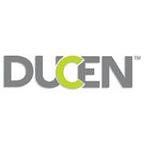5 tech trends for telco in 2021: security, advanced analytics & more
The telco industry isn’t slowing down: what to expect and prioritize in 2021
2020 was all about problem-solving. And indeed, the industry was able to come up with creative and innovative solutions to address emerging threats and challenges-unexpected and not. So, what will this new year bring for telecommunications?
Here are five trends predicted to shape the telco industry in 2021. We expect these areas and developments to be essential in continuing to boost customer satisfaction, drive innovation, and facilitate optimal delivery for telecom organizations across the globe.
1. Better ways to source and leverage data
Advanced analytics, reporting, data quality management and integration-these technologies and capabilities have always played a critical role in driving business outcomes for telcos. This 2021, data will continue to grow in complexity and volume, but there will be an increasing focus on real-time analytics and the Internet of Behaviors, according to Gartner.
These refer to individual’s activities, preferences, or behaviors, sourced through facial recognition, location tracking, and other such technologies. Real-time health monitoring and compliance have become essential during the pandemic, and this trend will likely carry over into this year.
2021 will also highlight strategic ways of dealing with data: enabling a 360-degree view of the customer, employee, and user in order to provide support and security regardless of location; and transforming data intelligence for more timely, nimble, and richer insights.
Related: MDM in telcos: Why it’s important and how to automate it through ML
2. Enhanced protection against emerging threats
Work-from-home became a global topic of conversation in 2020, with average remote workdays doubling during the pandemic. But while location independence fostered global collaboration, it also increased the risk for emerging threats. Organizations needed a trusted and secure way to provide access to digital tools and assets in the cloud for both employees and customers.
2021 will put the spotlight on cybersecurity. Strong strategies and policies to mitigate cyber threats, security of cloud-based applications and networks, and trusted transfers of data will be critical to business success. These processes can be further enhanced with the help of artificial intelligence for IT Operations (AIOps). With AI, identifying cyber irregularities and detecting suspicious online behaviors can be automated to prevent cybersecurity threats in near real-time.
3. Faster and more reliable cloud computing
In keeping with the theme of location independence and integration, the year 2021 will see a trend in distributed cloud computing. This model interconnects multi-cloud data, applications, and environments from various locations to ensure organizations can access the data and assets they need.
Not only does a distributed cloud infrastructure lower latency and improve performance for telco cloud services, it also enables a single control pane on one cloud environment to manage and access computing resources. Combined with a clear DataOps strategy and policy, this model also optimizes compliance strategies for regulatory concerns.
4. Improved AI production pipelines
The telco landscape is characterized by constantly developing technologies: IoT, 5G, Blockchain, and AI/ML, among others. In order to scale and compete in the industry, organizations must find a way to leverage these modern technologies to digitally transform operations, customer experiences, and service delivery and innovation.
To optimize the production of telecom artificial intelligence projects, 2021 will bring a focus on AI engineering, a discipline that combines data science, data engineering, and development capabilities to enhance AI strategies and workflows in the enterprise.
It involves various components that can help in operationalizing AI, such as DataOps that aims to reduce the cycle time of data analytics and DevOps that helps to speed up the process of deployment. To help organizations streamline the AI engineering process, there will also be a focus on workbench analytics and modeling workbenches.
Must-read: 5 signs your telco CX is lacking-and how data science can help
5. Efficient decision making with hyperautomation
A driving force of operational and cost efficiency, automation has been a prevalent trend in the industry for quite some time now, but 2021 will focus on the next generation: hyperautomation.
This practice leverages advanced analytics, predictive analytics, machine learning, cognitive intelligence, and AI to augment complex decision-making and issue resolution in various areas. AIOps, in particular, allows hyperautomation to be more efficient, flawless, and error-free.
For example, in order to keep up the volume and velocity of changes required in network infrastructure, NOC engineers will benefit from machine learning to automatically provision, configure, and assure critical networks.
Take control of your data this 2021
Undoubtedly, the trends listed above brings data to the forefront-unifying data for a full, 360-degree view, ensuring quality and security for cloud migration and data transfers, enabling DataOps to drive development projects efficiently, facilitating automation with streamlined data supply chains, and more.
It’s fitting for an industry that has data at the heart of its operations-collecting, transmitting, and creating data to facilitate modern communication. For a more successful 2021, telco organizations must be prepared to continue embracing innovation with tip of spear technologies: machine learning, automation, artificial intelligence, containerization, and new ways of mastering data.
Originally published at https://blog.ducenit.com.
